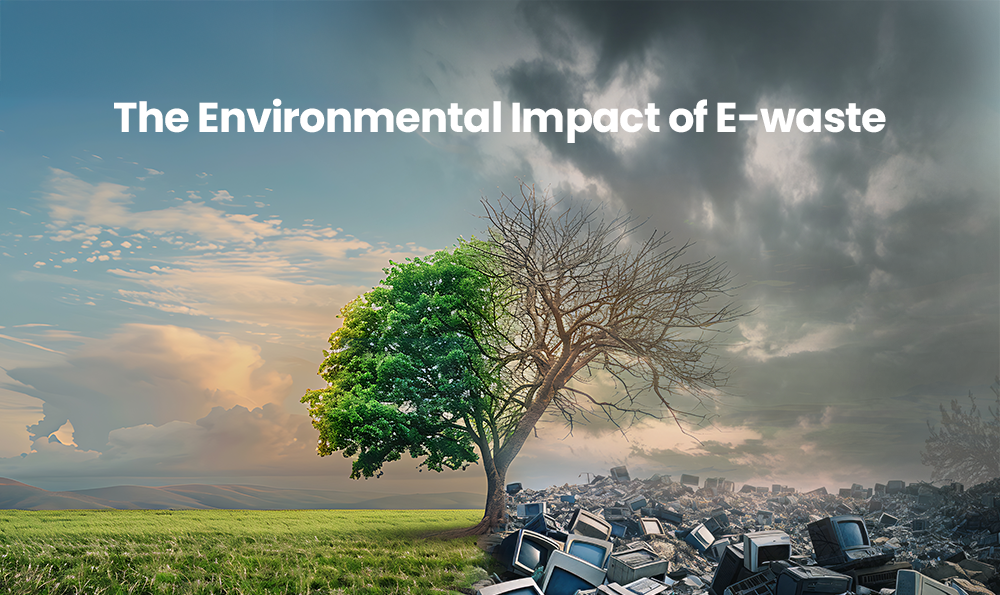In today’s digital age, technology evolves rapidly. We constantly upgrade to the latest gadgets—phones, laptops, and smartwatches. However, while we enjoy modern tech, we often overlook a serious issue: e-waste pollution.
What Is E-Waste Pollution and Why Does It Matter?
E-waste pollution occurs when discarded electronics are improperly disposed of, harming the environment and human health. These items include:
- Smartphones and tablets
- Laptops and televisions
- Household appliances and accessories
When thrown in landfills, these devices release toxic substances into the soil and water. As a result, ecosystems suffer, and people face serious health risks.
The Growing Threat of E-Waste Pollution Worldwide
There are several reasons why e-waste pollution is increasing, and many are linked to our modern lifestyle.
1. Frequent Tech Upgrades Fuel Electronic Waste
Nowadays, many people replace their phones or laptops every year or two. This trend creates vast amounts of waste over time. Consequently, landfills are filling up faster than ever.
2. Short Lifespan of Devices Increases E-Waste
Some devices are designed to become outdated quickly. As a result, users feel pressured to upgrade even when their devices still function.
3. Weak Recycling Systems Can’t Keep Up
Unfortunately, many regions lack the infrastructure to recycle electronics properly. Therefore, a large portion of e-waste ends up polluting the environment.
Why E-Waste Pollution Is a Health and Environmental Crisis
Discarded electronics contain hazardous materials such as lead, mercury, and cadmium. When these chemicals leak into the ground or water, they can cause serious health issues including brain and lung damage.
Furthermore, in developing countries, workers including children often dismantle electronics without protective gear. As a result, they face long-term exposure to toxic substances, worsening the impact of improper electronic waste disposal.
Where Does E-Waste Pollution Hit the Hardest?
Wealthier nations often export their electronic waste to developing countries. In these areas, electronics are taken apart using unsafe, manual methods. Consequently, local air, soil, and water become contaminated. Entire communities suffer because of this global imbalance in waste responsibility.
Can E-Waste Pollution Be Reduced Through Recycling?
Yes, it can—but it’s not easy. Proper recycling of electronic waste requires trained professionals and specialized tools to manage toxic materials safely.
However, many individuals continue to dispose of gadgets in regular trash bins. This careless habit only adds to the growing electronic waste crisis. Therefore, using certified e-waste recycling centers is essential to breaking this cycle and minimizing environmental harm.
How to Take Action Against E-Waste Pollution
Even small actions can help reduce e-waste pollution. Here’s how you can contribute:
1. Use Devices Longer and Repair When Possible
Instead of buying a new device, try fixing your current one. This reduces waste significantly.
2. Support Brands That Reduce E-Waste
Look for companies that offer take-back programs or use recycled parts. These efforts reduce environmental impact over time.
3. Donate or Sell Working Devices
If your old gadget still works, pass it on. Someone else may find it useful.
4. Recycle Electronics Responsibly
Search for certified recycling centers nearby. Many offer free or low-cost drop-off options.
5. Educate Others About E-Waste Pollution
By spreading awareness, you help others make informed decisions. This collective effort can drive meaningful change.
Final Thoughts on Fighting E-Waste Pollution
Technology offers countless benefits but it also brings environmental responsibility. If we don’t act now, the growing tide of electronic waste will continue to harm our planet and communities.
Thankfully, the solution is within reach. By reusing devices, recycling them properly, and making conscious choices, we can reduce the damage. Let’s be part of the solution not the pollution.
